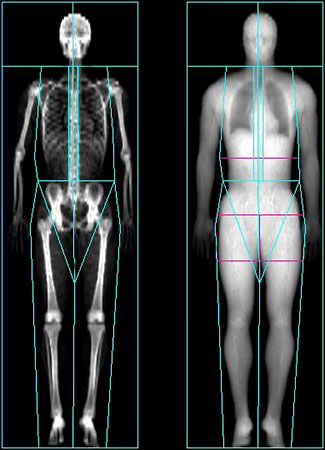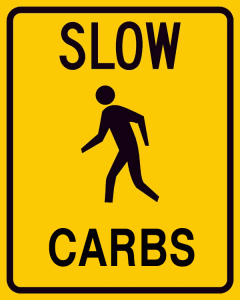…at least I am anyway. After years of living in the blissful land of inaccurate skin fold calipers, I found out that Texas A&M has student rate on DEXA scans ($55). So I decided to get a truly accurate picture of my % body fat and was shocked at the results.
First for those that aren’t aware, the DEXA scan uses extremely low levels of radiation to determine your fat, muscle, skeletal, and water weight. How low? It’s around 1/40th of a typical chest x-ray, and the fact that the doctor sits next to you during the scan without a lead lined smock is pretty comforting. DEXA scans are currently the most accurate way to measure your body composition – better than traditional submersion methods or the “bod pod” (the 2nd most accurate). On top of that, you get a bone density measurement as a bonus. It goes without saying that calipers and “body impedance” scales are vastly behind any of the these methods.
Going into the test I felt pretty good. I have some room in my 32″ waist size pants and my caliper measurements put me at just 9.4% fat. Sure, I’m not yet the at the golden goal of 5%, but hey that’s why I’m training for an Ironman event.
 The shocking DEXA results? 17.1% fat!!!
The shocking DEXA results? 17.1% fat!!!
Thankfully, Dr Martin was able to put a little salve on my wounded pride: DEXA scans are revealing much higher numbers than previous methods. A scan of 17% would have fallen in the 12-15% range using the former gold-standard submersion method. In fact, a study out of Texas A&M that tracked elite college athletes found female swimmers had an astonishing average of 22.2% body fat using the DEXA scanner. This is not to say those athletes have a bad body composition, but rather that our measures of “good” and “bad” levels of body fat were calibrated on a method (submersion) that was significantly under-reporting fat. So until the “conventional wisdom” and rules of thumb catch up to these more accurate measuring tools, prepare yourself mentally before undergoing a DEXA scan.
Now as with all methods, repeated measures with the same instrument will give the most comparable results. Which is why I plan no revisiting the DEXA machine once or twice to track my progress towards becoming an Ironman. Although I’m revising that goal of 5% to something more realistic like 12%.


 So I have been looking for something new to get back down to my “fighting weight” and get ripped just in time for winter. I recently discovered a new diet plan from Tim Ferriss called the Slow Carb Diet that takes the Lo Carb diet and adds back in beans. Alright there is a touch more to it but that’s the gist. Tim makes a good case for it in his book
So I have been looking for something new to get back down to my “fighting weight” and get ripped just in time for winter. I recently discovered a new diet plan from Tim Ferriss called the Slow Carb Diet that takes the Lo Carb diet and adds back in beans. Alright there is a touch more to it but that’s the gist. Tim makes a good case for it in his book